Uastirdzhi. Rider of the Rock
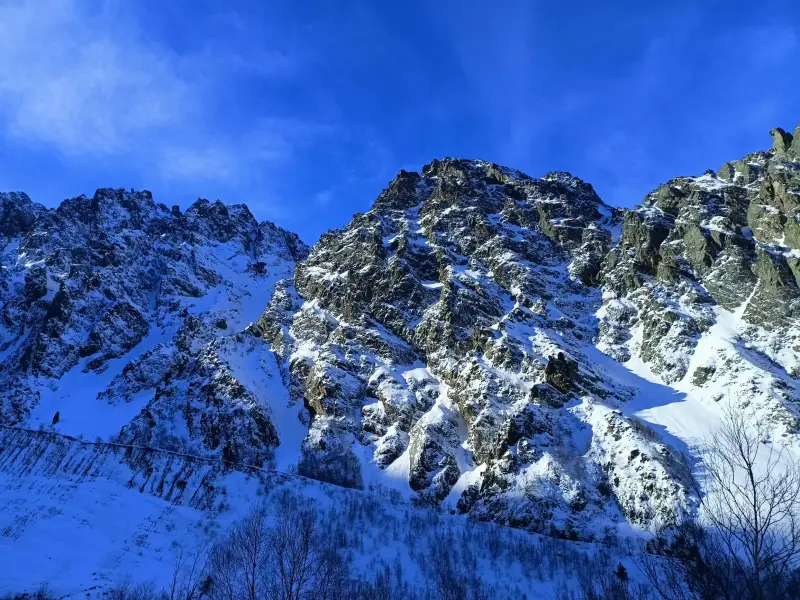
What is the Caucasus? The Caucasus is... mountains! Lots of mountains! Mountains are everywhere!
Who is the bravest in the world?
Ancient traditions and modernity. Once upon a time in my childhood, when there was no Internet yet, and only a couple of programs were shown on TV, and they did not always contain what was interesting to children, my parents showed me filmstrips, stretching a sheet on the wall. And it was very cool, although the pictures on the screen did not move. You sit in the semi-darkness, a pleasant warmth comes from the large black epidiascope, bright pictures change on the wall, and mom and dad take turns reading the captions under them with expression... I especially liked one filmstrip, and it was called “The Tale of Dahanago.”

One of the pictures from this filmstrip. Well, how could a little girl not fall in love with such a beauty? “If only I were like that!” – I thought, probably, I’m not the only one
However, it turned out that in the Caucasus, about which I had heard so much and read so much, I was no longer a girl, which, however, did not diminish the severity of the impressions. On the contrary, now I myself can tell you about what I saw that made a particularly strong impression on me. And these are by no means mountains, although they are... simply stunning, but something man-made and absolutely amazing - a huge horseman growing straight out of the rock with a name that is difficult to pronounce for me... Uastirdzhi!
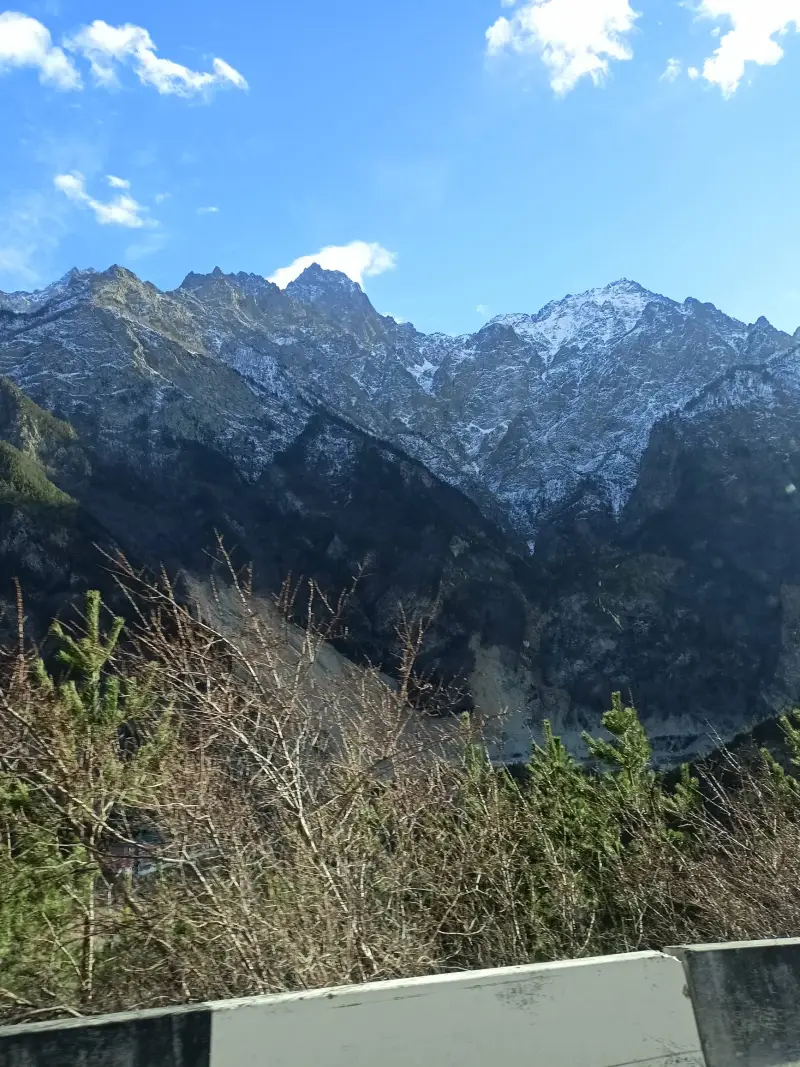
Roads of the Caucasus... Everywhere you look, one landscape is more beautiful than the other!
But who is he and for what exploits did he receive such an honor?
It turns out that this truly amazing monument, which, by the way, is considered one of the largest equestrian statues in the world, was erected on the Trans-Caucasian Highway - the road connecting Transcaucasia and Russia in honor of the hero of the ancient Nart epic, and for the residents of Ossetia he is still a saint today!
If anyone has traveled along this highway, then he knows that the road either winds through gorges or goes through tunnels cut into the mountain strata. And when suddenly, around one of the turns, this cyclopean figure appears from a steep rock right in front of you, you involuntarily take your breath away!
“How did they drag her here?” – a question immediately arises in your head, after which you try to find out as much as possible about her. And... you'll find out!

Typical mountain river. Not wide. Shallow. But stormy and noisy...
It turns out that the traditional faith of Ossetians in ancient times was called Uasdin (Uashdin), and this is not just a faith to which we are accustomed, but some truly aristocratic and noble idea of the human person, a certain ethics based on the concept of honor and shame, and not at all sin , and a heroic attitude to difficulties instead of slavish humility before fate.
And this faith also included the glorification of the world around people, their beauty, strength and health, a reverent attitude towards justice (the principle of “hit on the right cheek, turn the left” would have been simply incomprehensible to the ancient Ossetians), as well as the inseparability of aesthetics and morality .
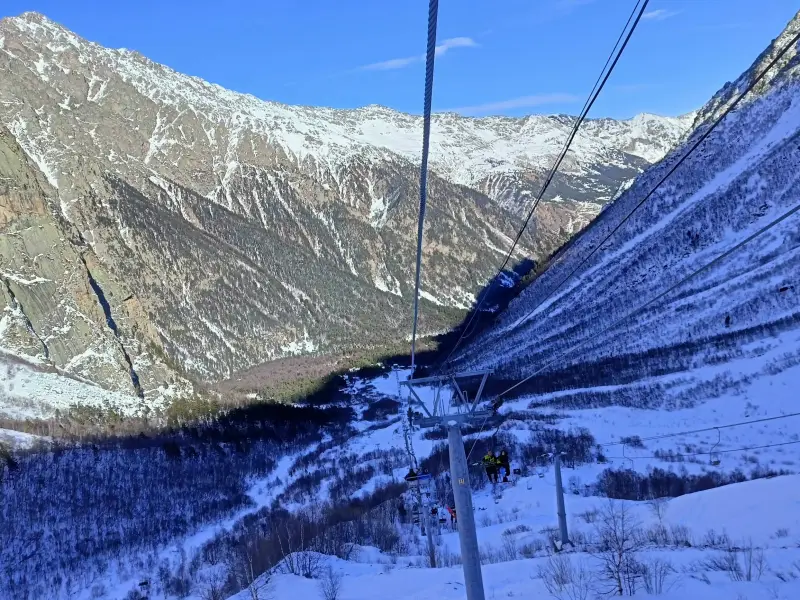
However, today the Caucasus mountains are no longer as wild as they used to be. In any case, in some places there are not only highways, but also cable cars.
The Ossetians called God Styr Khuysau, the Elder God, and they imagined him to have neither image nor form, incomprehensible and omnipresent, the source of the highest wisdom, the creator and patron of the Universe. Whatever the occasion, the Ossetians prayed, first they called the name of this God (“Dune chi sfældysta iungeg kadzhyn Khuytsau”), and then they called the names of dzuars or patron spirits.
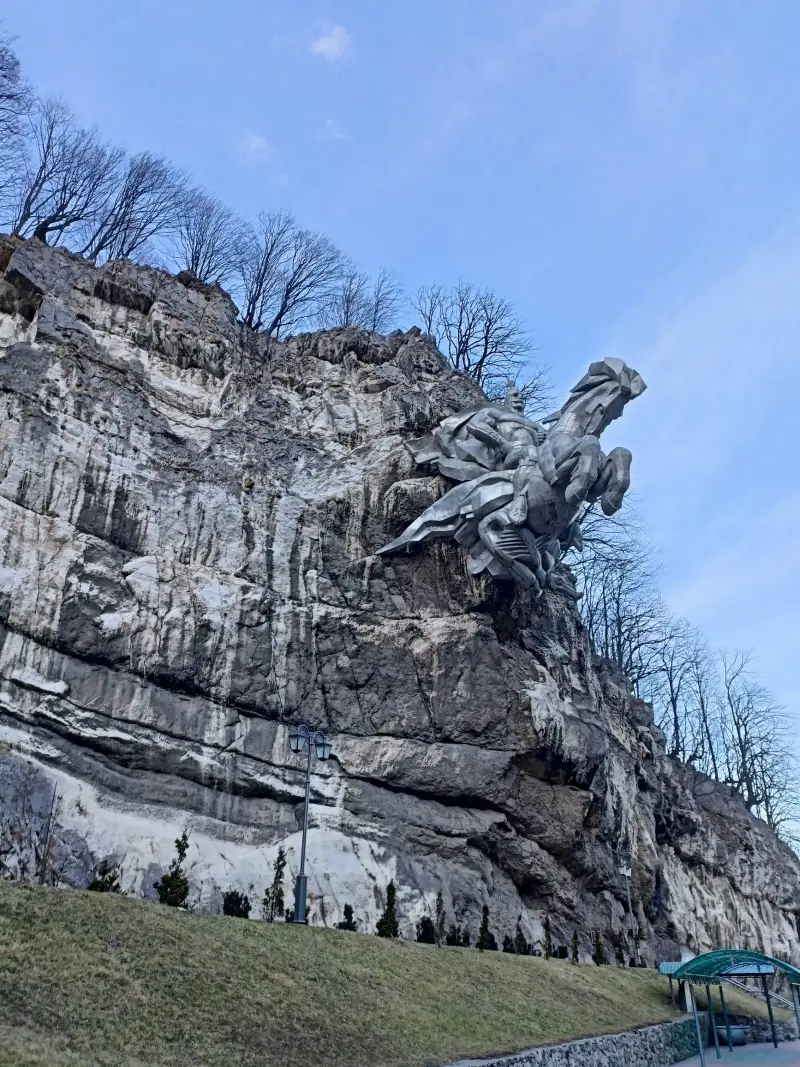
Here it is, the monument to Dzuar Uastirdzhi or the Ossetian St. George the Victorious!
When Christianity penetrated into North and South Ossetia from Byzantium in the 9th century, they began to profess it, but many ancient images very smoothly flowed into the new faith and remained in it... until now!
Thus, the dzuar Uastirdzhi, in the ancient Nart epic described as a celestial being and depicted as an old man on a three-legged white horse in a white cloak, became the patron saint of men, warriors and travelers. He lives in heaven, but comes down to earth to check people and find out if they help each other in need and sorrow.
It is interesting that if we judge him specifically by the Nart epic, it turns out that this celestial being was not alien to anything human: he participated in the Narts’ campaigns for booty and... in their feasts. He did not shy away from women and was the father of the beautiful Shatana.
In general, according to the ideas of the Narts (and then the Ossetians), he is... a mediator between God and people, among whom he appears, taking on the image of an old beggar. It is interesting that women are forbidden to pronounce his name, and for some reason this has been the custom since ancient times, and they can only call him allegorically - Lagty Dzuar, that is, “the patron of men.”
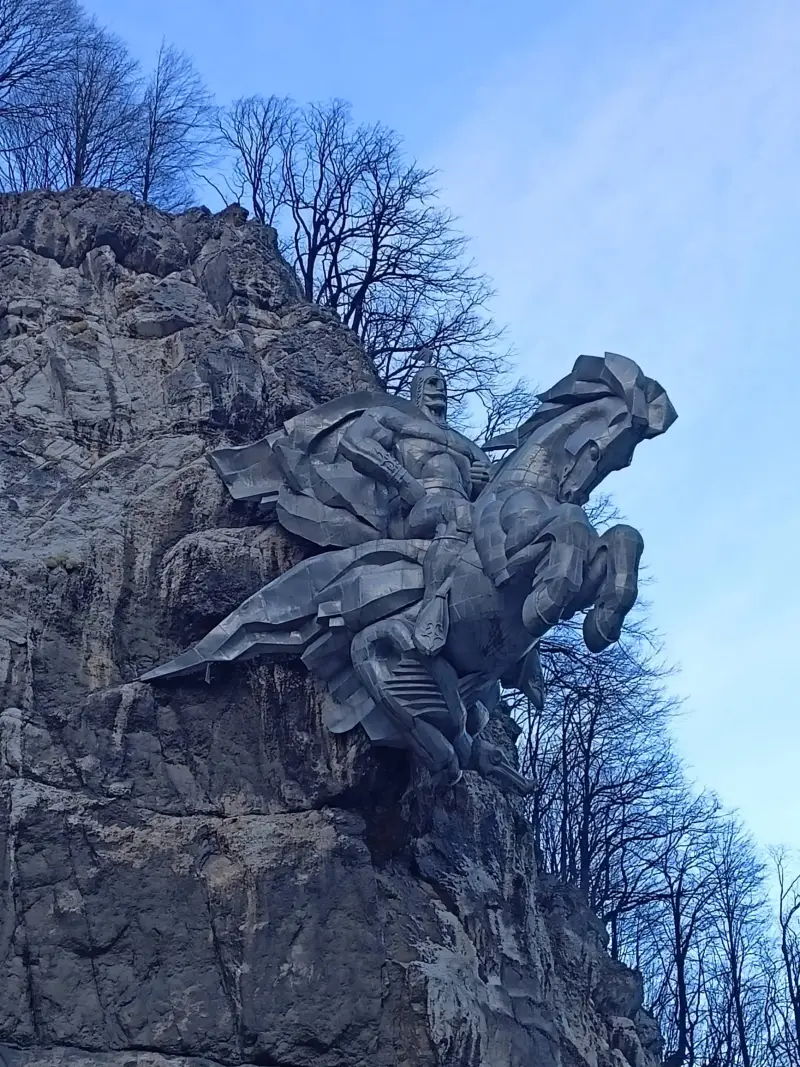
We come up and look at it close, on the right...
In Ossetia, a large number of sanctuaries are dedicated to him. There is also a holiday in his honor, which is celebrated in the second half of November, starting on the 23rd, and symbolizes the end of agricultural work and, of course, with the breadth and scope inherent in all mountain peoples. By the way, this date also coincides with St. George's Day among Christians.
At the same time, a “well-fed calf”, that is, a bull, is usually slaughtered for the holiday, but eating chicken or pork is strictly prohibited! Well, the festivities themselves in his honor last for a whole week.
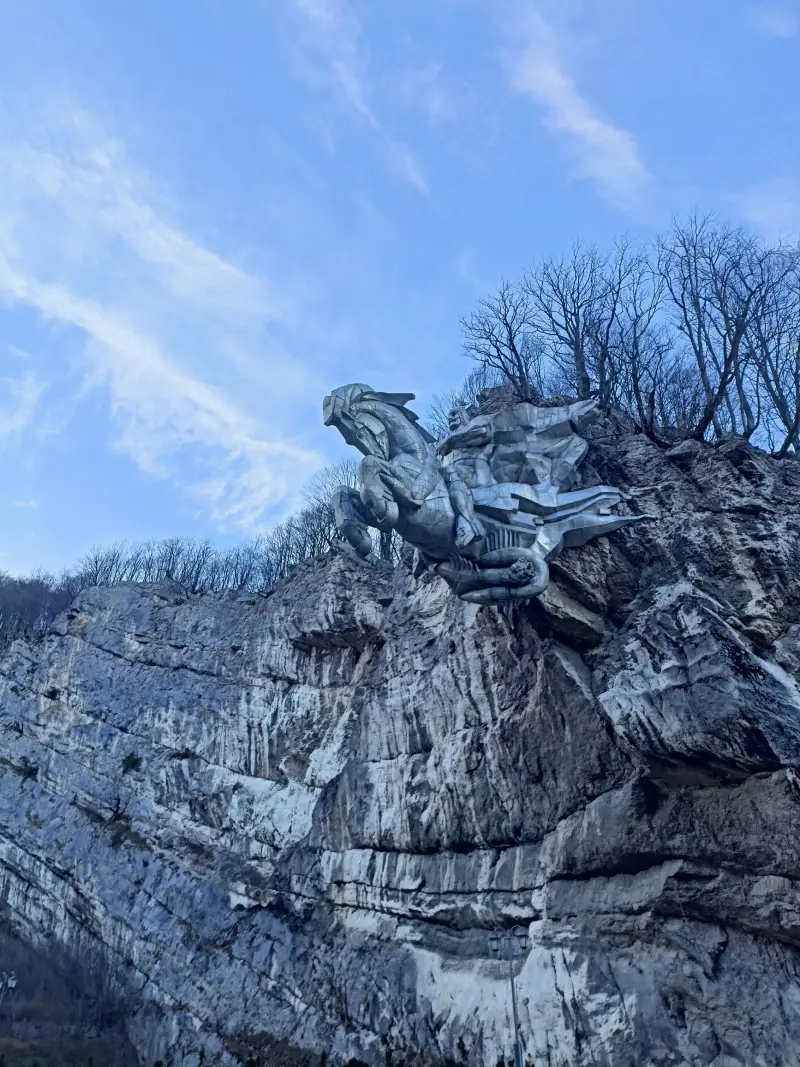
And now on the left...
But the most interesting thing is that over time, among the professing Christian Orthodox population of Ossetia-Alania, the image of Dzuar Uastirdzhi merged with the image of St. George the Victorious, who became... the patron saint of Alania. Although there seems to be no connection between Saint George from Ancient Rome and the Nart heavenly warrior, but come to think of it, the ways of the Lord are truly inscrutable, and this is precisely the merger that happened!
Moreover, the common phrase among local residents: “Uastirdzhi de’mbal” is precisely translated: “May St. George be with you.” Moreover, they are depicted very similar: riding a horse, and always white, and dressed in military armor. Is it that St. George the Victorious on the coat of arms of Moscow has a red cloak on his shoulders, and his Caucasian “colleague” has a white cloak!
In general, the legend of Uastirdzhi essentially reflects a whole complex of beliefs of the peoples of the North Caucasus that came from ancient times, associated with the hope for justice and... the purity of the human soul.
As a result, it is not at all surprising that they decided to erect a monument in his honor in the republic. Its author was the architect Nikolai Khodov, who most likely had no idea how popular his creation would become!
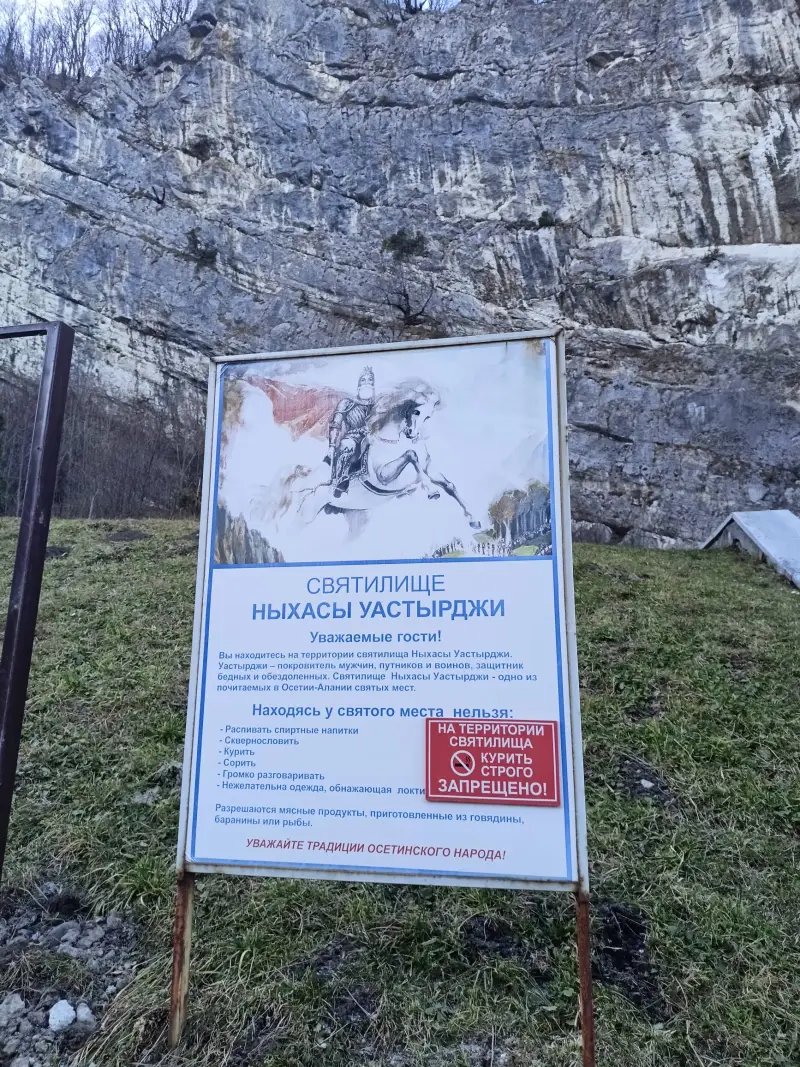
Rules of conduct in the sanctuary - the cave under the sculpture. Please note that you can eat beef, lamb or fish!
His heroic equestrian figure was installed in 1995 near the town of Alagir. Moreover, the word heroic is quite appropriate here. After all, a person can easily fit on Uastirdzhi’s hand!
His three-legged horse is also huge: the length of the head is 6 m. The weight of the monument is 28 tons. Why is a horse three-legged? Well, one of the legends says so, and if the legend “says so,” it means that so be it!
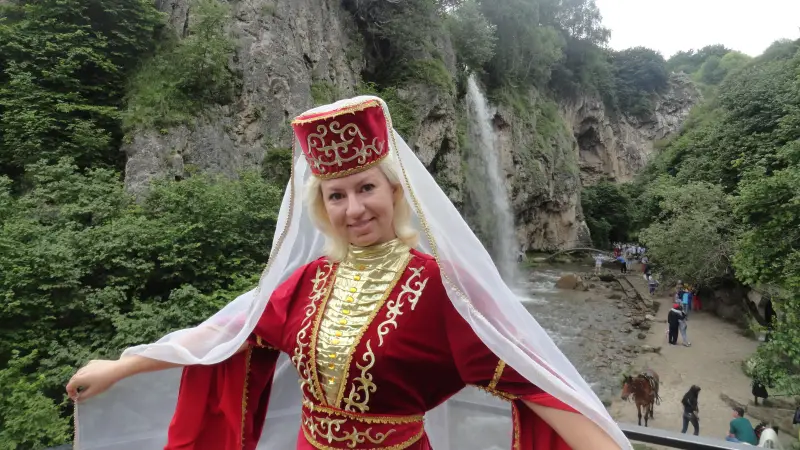
Who said that mountain women are all dark and black-haired? Yes, nothing like that. There are blondes there too!
The installation of the monument was carried out in the city of Vladikavkaz, but it had to be carried to the installation site by helicopter, since the sculpture turned out to be too heavy and cumbersome for vehicles.
The result is a wonderful composition: a hot iron horse and rider seem to grow out of the mountain and rush somewhere in a frantic impulse. The monument is suspended at a height of more than 20 meters, and is supported on metal beams embedded in the rock. Directly below the figure you can see a small cave for ritual purposes, in which there is a bowl for... offerings.
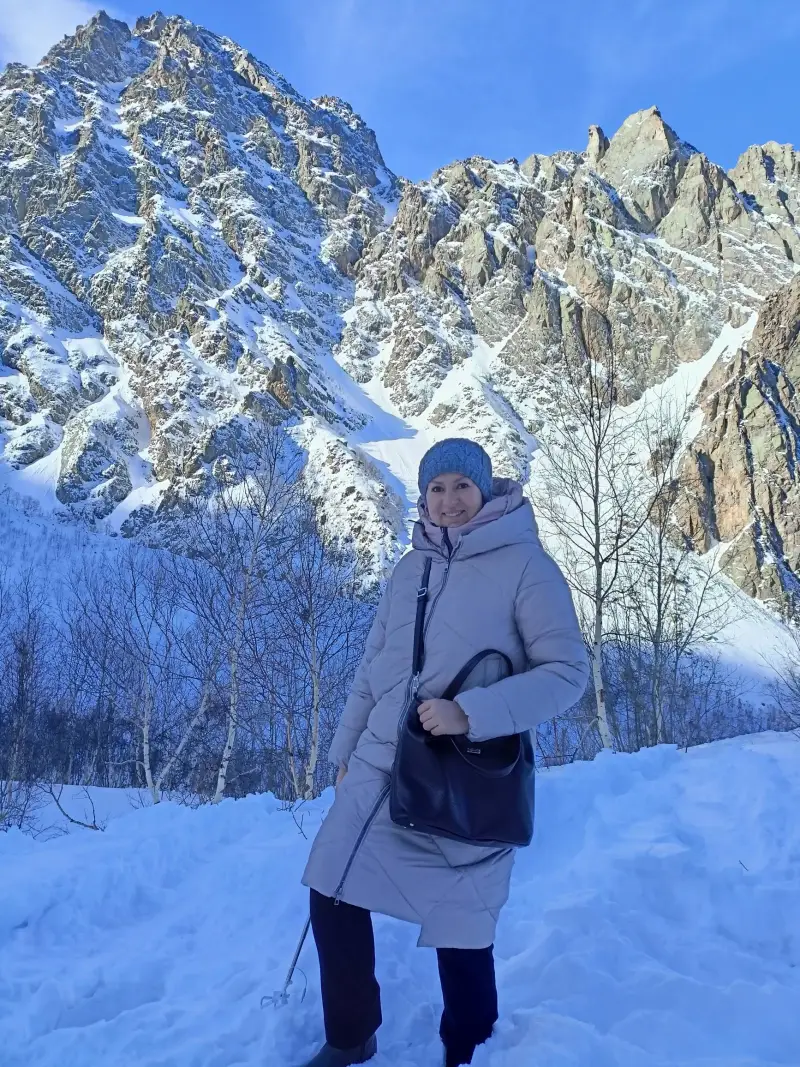
It's cold in the mountains, winter, like everywhere else. But overall it's still good! Until then, see you again, dear readers of Military Review. Bye bye!
Here you can see instructions on how to behave in this holy place and how not to.
However, the most famous sanctuary of Uastirdzhi is located in Dzivgis. This is a village hidden from prying eyes in the depths of the Kurtatinsky gorge. Although the monument in question here was also not built “just like that,” but on the site of Nykhas Uastirdzhi - another sanctuary revered by all Ossetians, which has been known since the mid-14th century.
Well, you can see and admire the horseman Uastirdzhi in the Alagir Gorge, the path to which from Vladikavkaz lies through the villages of Dzuarikau, Khataldon, Alagir and Buron. You can travel the entire distance to the monument in approximately one hour. And if you have the opportunity, you should definitely watch it!
PS
The material is illustrated with photographs by the author.
Information